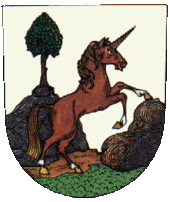Hojná Voda
| Hojná Voda | ||||
|---|---|---|---|---|
|
||||
| Basic data | ||||
| State : |
|
|||
| Region : | Jihočeský kraj | |||
| District : | České Budějovice | |||
| Municipality : | Horní Stropnice | |||
| Area : | 353 ha | |||
| Geographic location : | 48 ° 44 ' N , 14 ° 44' E | |||
| Height: | 794 m nm | |||
| Residents : | 33 (March 1, 2001) | |||
| Postal code : | 373 35 | |||
| License plate : | C. | |||
| traffic | ||||
| Street: | Horní Stropnice - Černé Údolí | |||
Hojná Voda (German Heilbrunn ; until 1623 Wilhelmsberg ) is a village in the municipality Horní Stropnice in the Okres České Budějovice in the Czech Republic . It is located 35 kilometers southeast of Budweis ( České Budějovice ).
geography
Hojná Voda is located in the Gratzener Bergland near the border with Austria. Neighboring towns are Dobrá Voda in the north, Dlouhá Stropnice ( Langstrobnitz ), Šejby ( Scheiben ) and Staré Hutě in the southeast, Černé Údolí ( Schwarzthal ) in the south, Benešov nad Černou in the west and Hartunkov ( Hardetschlag ) and Konratice in the northwest. Harbach and Lauterbach lie in the east across the border with Austria .
history
After a healing spring was discovered in the area above Strobnitz, around the middle of the 16th century Wilhelm von Rosenberg built a few houses that served as accommodation for those seeking healing. According to the biography that the Rosenberg archivist Václav Březan wrote about Wilhelm von Rosenberg, he also sought healing here, which is why the place was initially referred to as "Wilhelmsberg". In 1577, Wilhelm's brother Peter Wok von Rosenberg was one of the bathers at Wilhelmsberg. At this time there was already a chapel here, which was cared for by clergymen from Beneschau.
After the death of the last Rosenberger, Peter Wok, in 1611, Wilhelmsberg came to Peter von Schwanberg , who added it to his rule of Gratzen . Since he was involved in the Bohemian uprising , he lost his possessions after the Battle of White Mountain . Subsequently, Emperor Ferdinand II. Wilhelmsberg gave his general Carl Graf Bucquoy , whose descendants remained until they were expelled in 1945.
In 1623 Wilhelmsberg was renamed "Heilbrunn". 1625–1630 built Maria Magdalena von Buquoy on the site of the former chapel, the St. Anna Church as a branch church of Strobnitz. In 1650 it was elevated to a parish church and gained importance as a pilgrimage church. From 1674 the pastor's position was filled with Cistercians from Hohenfurt Abbey . After the construction of the baroque pilgrimage church “Maria Trost” in neighboring Brünnl, the Heilbrunn pilgrimage declined. In 1708 Heilbrunn and Brünnl were united into one parish, which was under the patronage of Count Buquoy, with the clergy continued to be provided by the Hohenfurt Monastery. Heilbrunn only became an independent parish in 1855. In 1892 the three-class school in Heilbrunn consisted of 212 students.
In 1938 the population was over 600, of which 15% were Czech. After the Second World War, the German population was expelled in 1945/46 . The last pastor in Heilbrunn was Father Daniel Waschenpelz from Hohenfurt. After the communists seized power in 1948, the area of Hojná Voda was declared a restricted political area because of its proximity to the border with Austria. Thereafter, the healing business was stopped and most of the houses and the church destroyed. After the political change in 1989, the tourist infrastructure was expanded, which gradually developed summer and winter tourism. In 1991 the place had 25 inhabitants. In 2001 the village consisted of 15 houses in which 33 people lived.
Attractions
- Wayside shrine of St. John of Nepomuk
- The St. Anna parish church was destroyed after the Second World War.
- The Heilbrunn primeval forest ( Hojnovodský prales ) east of Hojná Voda was designated as a nature reserve by Georg Franz August von Buquoy in 1838 together with the southern Sophien primeval forest . This makes them one of the oldest nature reserves in Europe.
literature
- Zdeněk Štrejn, Vladimír Hyhlík: Brno - pilgrimage church of Maria Trost . Historická společnost Starý Velehrad 1995, ISBN 80-901836-5-4 .



